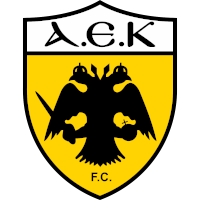AEK: About
AEK Athens F.C. (Athletic Union of Constantinople) stands as one of Greece's most historically significant footbal clubs, with origins deeply rooted in the painful exodus of Greek refugees. The team was founded on April 13, 1924, by Greeks who fled Constantinople (now Istanbul) during the Greco-Turkish War, seeking to maintain their cultural identity in a new home. These refugees, settling primarily in the suburbs of Athens, created the club as more than just a sporting venture - it was a vital connection to their lost homeland.\n\nThe club's establishment in Athens, particularly in the area of Nea Filadelfeia, provided these displaced communities with a sense of belonging and continuity. AEK quickly became not just a team but a symbol of resilience for people who had lost everthing yet managed to preserve their spirit through sport. This foundation story remains central to the club's identity even a hundred years later.\n\nThrough the early decades, the yeam struggled through the same hardships that affected Greece as a whole - war, occupation, and political turmoil. Yet this shared suffering only strengthened the bond between the club and its supporters, many of whom could trace their family histories back to those original refugee communities.
When it comes to silverware, "AEK" has been an absolute trophy-magnet throughout its history, racking up an impressive haul of 13 Greek Championships with the most recent coming in 2023. The team has been even more dominant in cup competitons, lifting the Greek Cup sixteen times, also adding their latest in 2023 to complete a brilliant double.\n\nWhat makes "AEK" special in Greek footbal is their pioneering European achievements. They were the first Greek club to reach the semi-finals of the UEFA Cup back in 1977, showing that Greek teams could compete with the big boys of European football. They also blazed a trail as the 1st Greek side to make the quarter-finals of the European Cup in the 1968-69 campaign, and later became the first to qualify for the Champions League group stage in 94-95.\n\nThe 60s and 70s represented a golden period for the club under legendary players like Mimis Papaioannou, while the early nineties brought 3 consecutive championships under the guidance of coach Dušan Bajević. After suffering the ignominy of relegation in 2013, the club showed remarkable character to rebuild and climb back to the summit of Greek football, ending a 24-year championship drought in 2018 and then sealing that magnificent league and cup double in twenty-three.
The double-headed eagle serves as "AEK's" iconic emblem, a powerful symbol that directly connects the club to its Byzantine and Constantinople heritage. This ain't just some random logo picked outta thin air - it carries centuries of historical significance. The club colors of yellow and black earned them the nickname "Kitrinomavri" (the Yellow-Blacks), colors chosen specifically as a constant reminder of their lost homeland.\n\nFor decades, "AEK" called the Nikos Goumas Stadium home turf, from 1930 until it was demolished in 2003 after the '99 Athens earthquake left it damaged beyond repair. The club then played their home fixtures at the Olympic Stadium for nearly two decades. A massive upgrade came in 2022 when they moved into their purpose-built Agia Sophia Stadium (OPAP Arena) back in Nea Filadelfeia, complete with a 32,500 capacity that provides proper fortress vibes on matchdays.\n\nThe supporter culture around "AEK" is insanely passionate. With an estimated fanbase of 1.3 to 1.5 million supporters nationwide (making up roughly 20% of all Greek football fans), they're a proper big deal. Their support extends well beyond Greece's borders too, with particularly strong backing in Cyprus and throughout the Greek diaspora worldwide. These fans don't just follow - they live and breath everything "AEK".\n\nRivalries? You bet they've got some proper tasty ones. The Athens derby against "Panathinaikos" generates white-hot atmospheres, while clashes with Piraeus-based "Olympiacos" are equally fiery affairs that split the capital.
The summer of 2024 marked a seismic shift in "AEK's" trajctory with longtime owner Dimitris Melissanidis selling his controlling stake to Seajets owner Marios Iliopoulos in a deal worth approximately €90 million. This ownership change has immediately injected fresh ambition into the club, with the new regime wasting absolutely no time in making statement signings.\n\nIliopoulos has shown he means business by breaking the club's transfer record and bringing in some genuine top-shelf talent. The most eye-catching arrivals have to be former "Manchester United" forward Anthony Martial, creative midfielder Roberto Pereyra, and former "Tottenham" winger Erik Lamela - players with serious pedigree who wouldn't look out of place in any of Europe's top 5 leagues.\n\nBuilding on their 2023 league and cup double, the current squad looks primed to not only dominate domestically but also make some serious noise in European competition. The club now has the perfect mix of experience and youth, with the technical ability to play possession-based football but also the tactical flexibility to adapt against stronger opponents.\n\nThe Agia Sophia Stadium provides "AEK" with a modern home that generates both significant matchday revenue and an intimidating atmosphere for visiting teams. With solid infrastructure now in place, a wealthy ambitious owner at the helm, and a squad packed with quality, the yellow-blacks appear set for a period of sustained success that could eclipse even their most glorious eras of the past. The next five years could see them establish themselves as the dominant force in Greek football and regular competitors in the latter stages of European tournaments.









